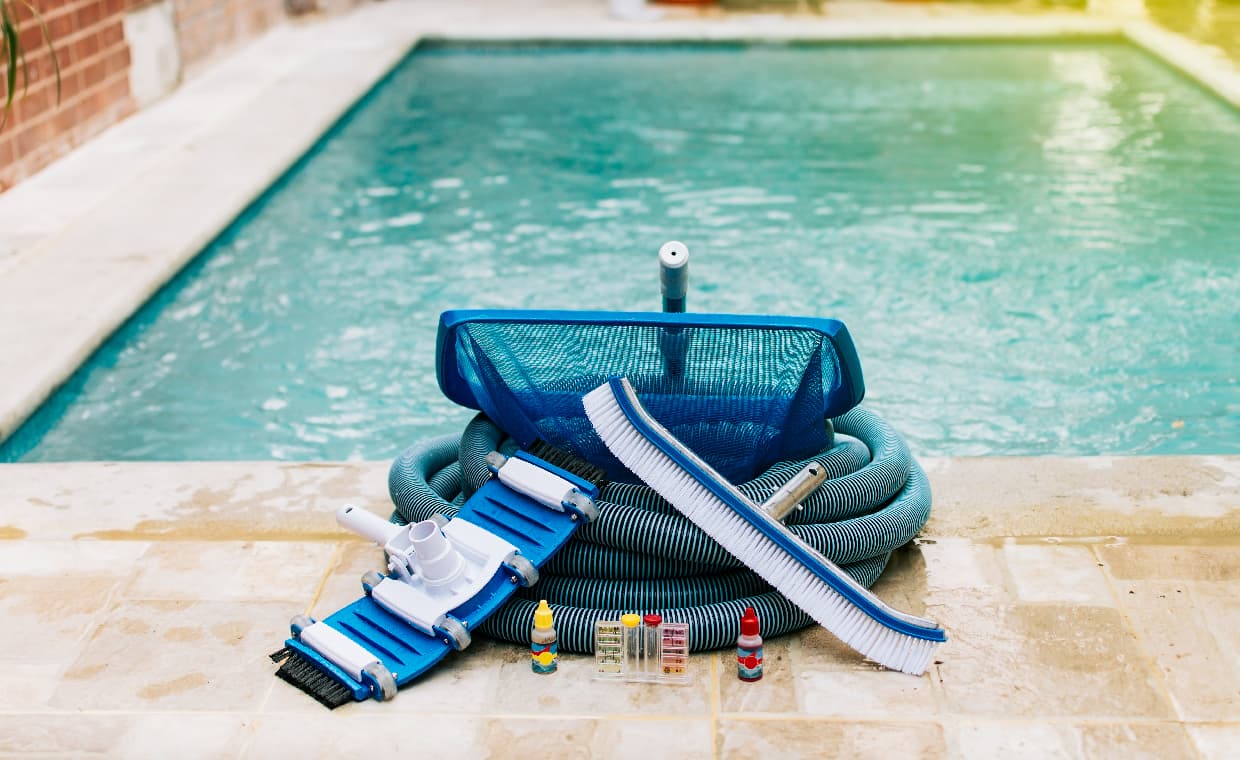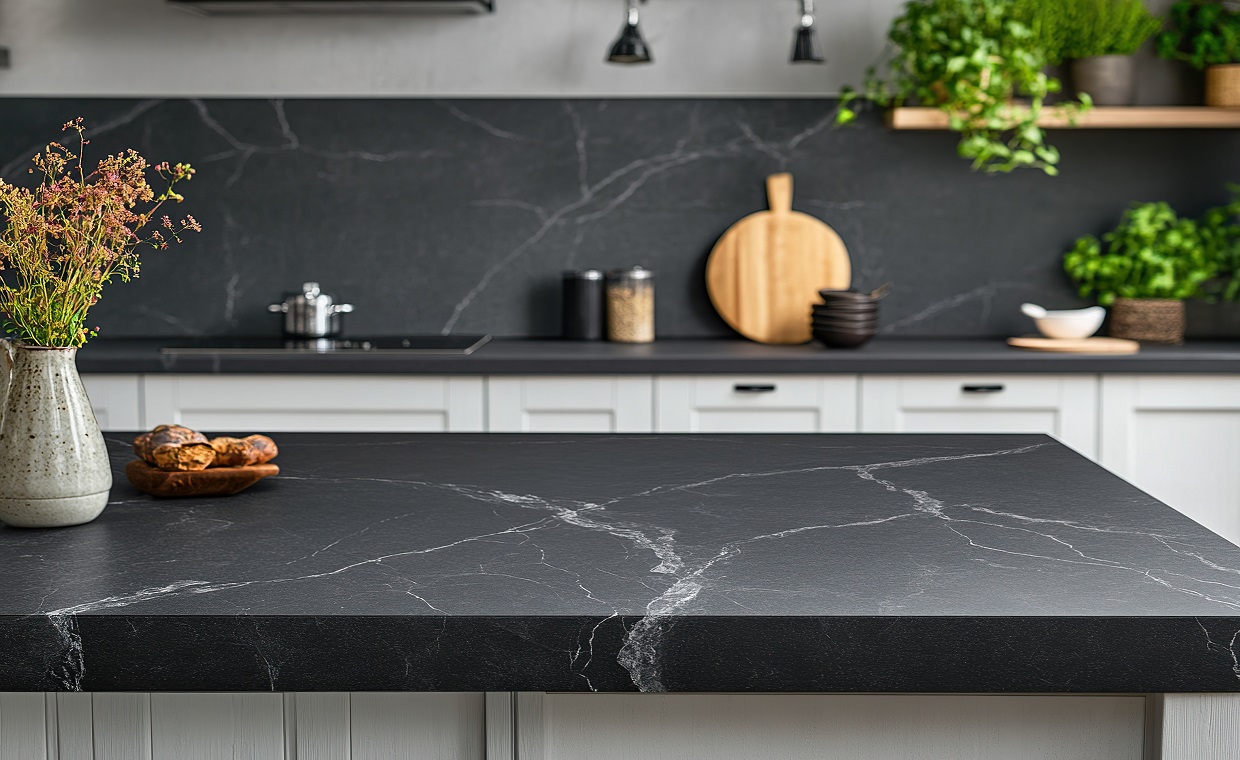
Having a pool on your property can be the most beautiful thing during the hot summer months. However, as with most good things, a swimming pool necessitates regular maintenance and attention to detail. Your swimming pool requires routine maintenance, and hence, having a basic understanding of swimming pool maintenance is important, whether you have an in-ground, above-ground, Intex, or saltwater pool. Many people prefer to hire pool professionals, but if you want to do it yourself, keep reading to learn how to keep your pool’s water sparkling clean. When you understand how your pool works, you’ll be prepared to handle almost any pool problem that comes your way.
01. Pool Filtration

Even if the chemical levels are acceptable, a dirty filter can dramatically affect water circulation, resulting in a green or cloudy pool. Millions of tiny particles cling to the filter as water passes through it, resulting in a sluggish pump that doesn’t do its job. Filters come in various shapes and sizes, each with its own cleaning procedure. Pool cleaning entails brushing, skimming the debris off the surface, and vacuuming it. Manual maintenance is an expected part of owning a pool. It involves scrubbing the walls with a pool brush to prevent algae, staining, and scaling, particularly around “dead areas” like steps, ladders, crevices, and below the skimmer.
02. Pool Skimming

The rectangular openings on the sides of underground pools are known as skimmers. One can remove large debris by skimming the water’s surface with a net or leaf rake. This debris is unappealing to swimmers and can fall to the bottom of your pool, staining it. Most above-ground pools have skimmers, usually hung from the pool’s sides and floating on the surface. Skimmers draw water from the pool’s surface, which contains most pollutants such as debris and sunscreen. They collect dirt before it stinks, which helps to keep the water clean.
Maintain the water level in your pool between 1/3 and 1/2 way up the opening of the pool skimmer. This is the level at which your pool performs optimally. A pool skimmer collects small debris, such as leaves and other items, that may have fallen into the pool. If the water level is too high or too low for the skimmer, then a few inconvenient and potentially damaging things can happen.
If the water level is too high, the water enters the skimmer too slowly. As a result, debris may bypass the skimmer and accumulate in the pool. If the water level is too low, the skimmer will have little to suck in and will eventually bottom out. Instead, it will draw in air, potentially hurting you.
03. Pool Vacuuming and Rake

Use a rake or net to remove debris like leaves, twigs, and branches. Invest in a sturdy and lightweight scoop with a telescopic pole. This improves access to all areas of your pool. A pool vacuum removes leaves, dirt, and other debris from the pool’s bottom. Another essential part of removing debris that can reduce circulation and damage your pool is vacuuming it. Use a vacuum head, hose, and pole attached to your skimmer via a vacuum plate.
04. Balancing the Pool Water Chemistry

Another important aspect of keeping your water clean is chemistry. When you balance the water correctly, you are less likely to encounter problems such as cloudy water, green water, or bacterial build-up. That is why having a good testing kit in your swimming pool maintenance toolkit is essential. Test your water weekly for the best results. To keep things simple, choose a test kit to tell you if you need to add pool chemicals to keep the water balanced.
- pH of Pool Water: It is imperative to check the pH of your pool daily. The pH level indicates the acidity of the water. This is significant because pH levels that are too high or too low can cause a good deal of swimming pool maintenance issues, ranging from equipment corrosion to increased green algae growth. The pH scale is 0 to 14, with 7 representing neutral. If the pH is greater than seven, then the water is basic; if it is less than seven, then the water is acidic. pH levels should typically range between 7.2 and 7.6.
- Calcium Hardness: Your pool’s calcium hardness should be between 200 and 400 ppm. When calcium hardness levels are too low, your pool’s plaster finish or vinyl liner may be damaged. However, if the calcium hardness of your pool is too high, it corrodes your swimming pool. Chemical imbalances aren’t the only source of excess calcium. The temperature of the water is also a factor: Calcium is more likely to precipitate out of the solution as the water temperature rises. Because calcium is more soluble in cold water, scaling of heater equipment is common. It causes unsightly rust stains and scaly white build-up on previously pristine pool surfaces. It corrodes fittings and causes tiny pinhole leaks in vital pool equipment.
- Chlorine: Chlorine repels undesirable algae and bacteria, kills harmful bacteria, and sanitises the pool water. When it comes to selecting the best chlorine products, there are a few options available. Chlorine comes in sticks, granules, and tablets.
- Chlorine Tablets: These tablets, which come in 1-inch and 3-inch sizes, dissolve slowly. They do an excellent job of swimming pool maintenance. Furthermore, most chlorinating tablets have a built-in stabiliser that protects the chlorine in your water from the sun’s rays. One can use the tablets in a floating dispenser, skimmer, or automatic chlorinator.
- Liquid Chlorine: Chlorine in liquid form is very similar to household bleach. But we should be careful while using this; it is much stronger when designed for pools. Although liquid chlorine is relatively simple to use, it has a relatively short shelf life. It will not last more than a few weeks.
- Chlorinating Granules: Chlorinating granules are multifunctional granules that can help you solve multiple problems at once, including chlorinating, shocking, and killing algae with a single daily application.
- Phosphate: Phosphates are organic materials found in your pool that come from dead leaves, lawn fertilizer, and a variety of other sources. When phosphate levels are high enough, algae will grow in your pool. This will turn the water in your pool green and cloudy. Too many phosphates in your pool can encourage algae growth and make maintaining proper pool chemistry more difficult. However, there are several things you can do to prevent phosphate build-up or remove it. Keeping organic materials out of your pool, such as leaves and yard waste, prevents phosphate build-up. Degrading organic material releases phosphates into the water. Another option is to avoid algae growth as much as possible.
- Alkalinity: A total alkalinity test kit determines total alkalinity in parts per million (ppm). It is best to keep it between 80 and 120 ppm. When the total alkalinity value falls below 80 ppm, the water becomes aggressive, and the pH can easily swing upward, downward, and back again. If the value exceeds 120 ppm, the water can become cloudy and scale-forming, and the pH will rise.
05. Pool Water Circulation

Proper pool water circulation is essential for healthy and safe swimming because moving water in your pool is cleaner and safer. Pool algae infestations and cloudy water are rare in pools with good circulation. To maximise circulation, run your pump and filter system every day. You should ideally keep your pool open 24 hours a day, seven days a week. However, because that is not always possible due to budgetary constraints and other reasons, it is good to run your filter for at least 10 to 12 hours per day. This will help keep your pool safe and clean by turning the water over a few times.
Backwashing your filter regularly is another important component of good pool circulation. Backwashing is the process of reversing the flow of water through your filter and directing dirty water and contaminants to the waste port and then out of your pool. Several components form the circulatory system of your pool. The skimmer, pump, filter, and jets are all part of the system. Your water quality will suffer if any of these components is significantly hampered.
06. Pool Brushing

Brushing the pool walls will remove some particles and build-up that adhere to the porous concrete or fibreglass. Do it once a week before you vacuum. After brushing the surfaces, the particles will sink to the bottom. This can be vacuumed.
07. Pool Water Level

Pools lose water because of evaporation and use. Water levels should not drop below the skimmer intake tubes because this can damage the pump. The simplest way to refill the pool is to run a garden hose through it for a few minutes. Before you do so, make sure to check your local water restrictions. When you’re skimming the pool, check the water levels once a week.
08. Shocking the Pool

Shocking your swimming pool is an effective way to remove organic materials from the water, kill algae, and keep your pool clear. Shocking the pool entails adding a large amount of chlorine to the water to combat organic contaminants like ammonia and nitrogen that can accumulate in a pool and cause it to become cloudy and smell of chlorine. If you are thinking about doing this, do it safely because chlorine is a chemical. This task is critical because shocking keeps the water clear and reduces eye irritation and chlorine odours. Certain chlorine products already have shockers.
Basic Shock Products: Basic products kill bacteria by breaking down cosmetic residue, suntan lotions, and any other type of swimmer waste. To reduce chlorine, use basic products to shock the water.
Multifunctional Shock Products: These products work quickly to restore water clarity by eliminating all types of bacteria. Multifunctional products also help to balance the pH of pool water, improve filtration, and protect against algae. The main advantage is that these shocking products allow you to return to the water within 15 minutes of using them.
09. Use of Pool Cover

You need a good pool cover, whether you have an in-ground or above-ground pool, to keep dirt and debris out of your pool when it’s not in use. Pool covers also help to keep water and chemicals from evaporating and maintain the water temperature. There are two types of pool covers: mesh and solid.
A mesh pool cover is long-lasting and durable, does not require a pump, and is simple to install. However, it allows dirt and sediment into the pool and necessitates more maintenance when the pool is reopened. It also lets in sunlight, which encourages algae growth. A solid pool cover is smooth to the touch and keeps debris and sediment out of the pool. The pool remains clean because there is no algae growth. It has a shorter life span than a mesh cover, is more expensive, and requires a submersible pump.
Conclusion
If you follow the basic steps outlined above, you will be well on your way to effective swimming pool maintenance, keeping your pool crystal clear and avoiding problematic algae growth. The key is to develop a routine and to act as soon as you notice discolouration, cloudy water, scaling, or other signs of trouble.
Also, check out this interesting article: Relaxing Interior Swimming Pool Design
Image Courtesy: Image 2
Author Bio
Sabina – Sabina Yesmin Islam Assistant Engineer (Civil) Irrigation Department, Govt. Of Assam.






























